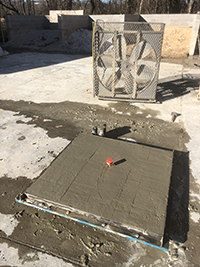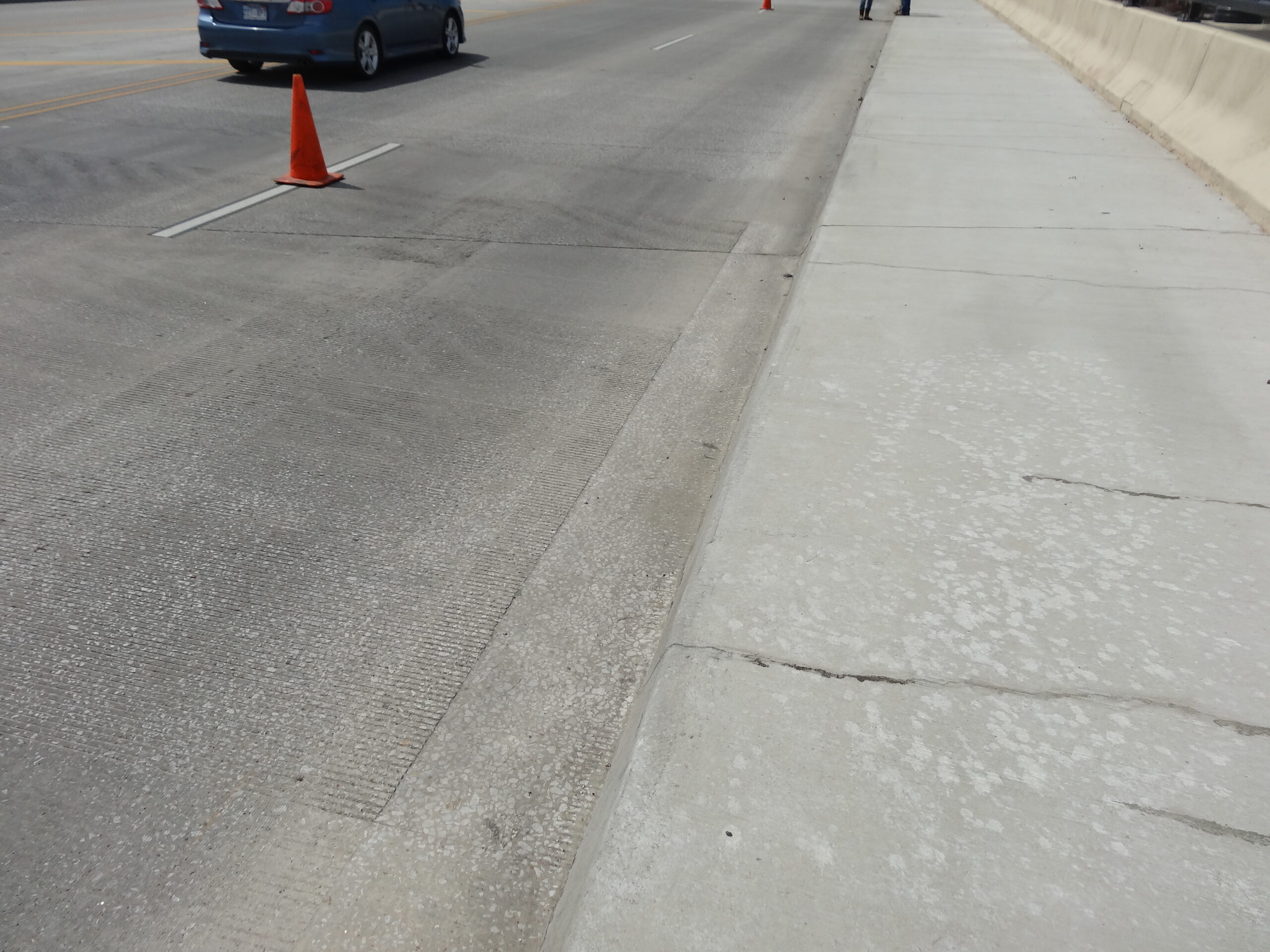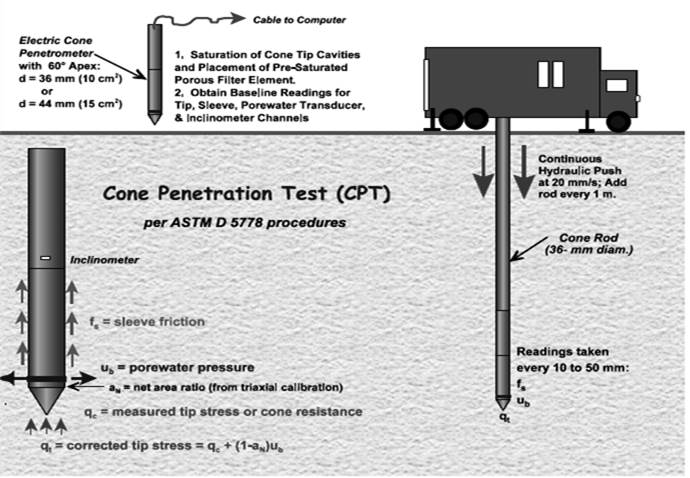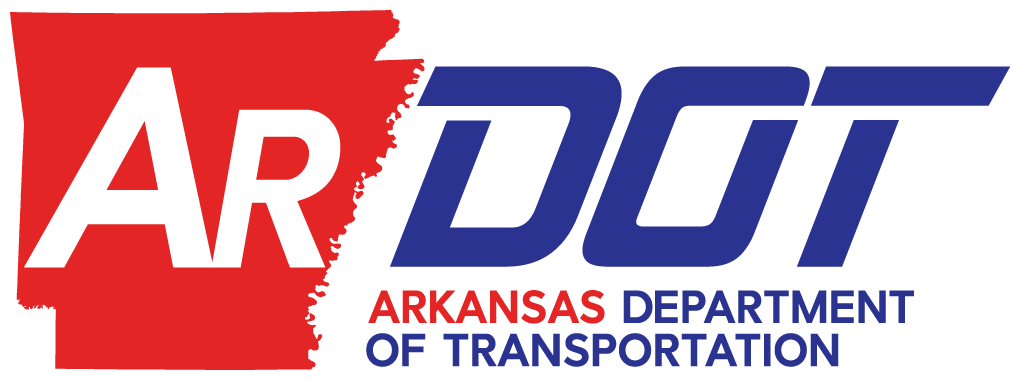
FY23 Projects
FY21 Projects
TRC2101 – Update of the ARDOT Workforce Forecasting System
TRC2102 – Effect of Aggregate-Binder Compatibility on Performance of Asphalt Mixtures in Arkansas
TRC2103 – Developing Guidelines for Evaluating Weathering Steel Bridges
TRC2104 – Maintanence Guidelines for Mechanically Stabilized Earth (MSE) Walls
TRC2105 – Innovative Countermeasures to Deter Wrong-Way Driving
TRC2106 – Applying UAS LiDAR for Developing Small Project Terrain Models
TRC2107 – Non-Nuclear Moisture Content and Density Determination
TRC2301: Smart Work Zone (SWZ) System Design, Specifications, Estimates, and Implementation Guidelines
The ability to manage traffic through highway work zones is rapidly improving. Portable Intelligent Transportation System (ITS) devices can detect slowing traffic, and push alerts to the contractor, Resident Engineer, Transportation Management Center, and drivers’ smartphone apps such as Waze or Google Maps. Smart arrow boards can inform stakeholders of lane closures in real time. Dynamic speed limits based on work zone conditions are being used successfully in many states. Third-party data providers that push data to consumers via smartphone apps can also detect and impute traffic conditions near work zones. This research will inform the development of an SWZ special provision that will replace the automated work zone information system (AWIS) special provision for highway contracts. Specific objectives intend to provide a process that will assist in identifying the need for an SWZ earlier in the project development process, consider when to use specific new technologies, and better design and estimate SWZ costs.
TRC2302: Development of Pedestrian and Bicyclist Flow Volumes and Risk Factors
Pedestrian and Bicyclist safety is a growing concern and priority for the U.S. Department of Transportation. Fatalities for non-motorists have increased nationwide since 2009, and this increase has also been observed in Arkansas. The first objective of this project will be to collect data on non-motorized transportation users across the state using count stations and crowdsourced data. Traffic volume data will be overlaid with historical crash data to determine crash risks. Recommended countermeasures will be determined to address high-risk areas and provide resources for future project planning to make Arkansas roads safer for all users.
TRC2303 – Evaluation of Impacts Due to a Bridge Closure: A Case Study of the Mississippi River Bridges in Arkansas
The objective of the proposed research is to quantify the multi-modal impacts due to a Mississippi River bridge closure. This study will consider different scenarios/combinations of bridge closures (i.e., full and partial bridge closures that take into account one/both directions, single/multiple lanes, and day/night closures), including all the Mississippi River bridges in Arkansas (i.e., I-40, I-55, Hwy 49, and Hwy 82 bridges). A comprehensive multi-modal analysis will be performed that considers the number of vehicles, trucks, and marine vessels/barges disrupted due to the bridge closure (with all potential scenarios/combinations) and applies detailed cost conversions to monetize direct (delays) and indirect (safety, infrastructure, operations) impacts. Also, this study will develop an Excel-based tool to conduct “what-if” analyses for decision-making purposes, whether for construction, maintenance, or planning activities.
TRC2201 – Update to ARDOT Superpave Gyratory Compaction (SGC) Specification to Increase Pavement Durability
The overall objective of the proposed research is to increase the durability of asphalt pavements. This study will evaluate current mix designs for surface asphalt concrete hot-mix (ACHM) used around the state when reducing the number of design gyrations (Ndes) and examine its effect(s) on change in mixture durability (rutting and cracking performance). The key is to assure that the mixtures produced with reduced Ndes will have sufficient asphalt binder content to provide enhanced long-term cracking performance while maintaining adequate aggregate structure to resist the permanent deformation (rutting) in the field for a given traffic level. Increasing the durability of asphalt pavements will result in a reduction in necessary maintenance, preservation, and rehabilitation efforts/ costs, and in a longer pavement life which will significantly reduce life-cycle costs. Also, the proposed study is the next logical step in fully implementing a performance engineered mixture design (PEMD) system for Arkansas. This project is expected to last 18 months.
TRC2202 – Updating ArDOT Liquefaction Evaluation and Mitigation Procedures
When designing bridge pile foundations in liquefiable soil, engineers at ARDOT use a Standard Penetration Test-based spreadsheet that was developed 10 years ago. Since then, more information has been published regarding liquefaction triggering procedures, skin friction, as well as end-bearing of piles in liquefiable soils, generating the need to create a more up-to-date version. This project aims to update ARDOT’s spreadsheet and liquefaction triggering evaluation methodology as well as incorporate additional means of evaluation and procedures. This project is expected to last 24 months.
TRC2203 – Low Shrinkage Concrete Mixtures For Arkansas
Early age cracking has been identified as a common cause for Arkansas bridge decks not meeting their design life. It is suspected that dimensional changes in the concrete during the curing phase, known as shrinkage, are the culprit behind early age cracking. A possible solution to this issue revolves around concrete mixtures and curing procedures. This project is focused on evaluating the relationship that local aggregate and cement combinations have with shrinkage and early age cracking, finding optimal mix designs to prevent shrinkage cracking using locally available materials, and determining the curing methods required to best prevent shrinkage issues. This project is expected to last 36 months.
TRC2204 – Materials and Testing Specifications for Drilled Shaft Concrete
This project will study drilled shaft concrete and attempt to create a new mix design for self-consolidating concrete. Drilled shafts are common in bridge foundations used across the state, and due to the amount of rebar in drilled shafts, self-consolidating concrete is needed to ensure full cement coverage and correct aggregate displacement. Research has been conducted in the past to create a self-consolidating mix design, but not specifically for drilled shafts. Additionally, this research project will review the testing procedures for self-consolidating concrete and recommend new QA/QC testing. This project is expected to last 24 months.
TRC2101 – Update of the ARDOT Workforce Forecasting System
To replace the current outdated system, TRC2101 – Update of ARDOT Workforce Forecasting System will re-estimate and expand the capabilities of the workforce prediction model and software. The project will develop new equations for the Construction Division’s Workforce Forecasting System and find or write new software with the possibility of integrating artificial intelligence (AI) in a future interface. The project will also explore the possibility of using this workforce forecasting system for more than Construction office crews.
TRC2102 – Effect of Aggregate-Binder Compatibility on Performance of Asphalt Mixtures in Arkansas
The primary objective of this study is to develop a draft specification including the implementable test protocols that ensure the use of durable and compatible aggregate-binder systems in the mix design phase for enhanced asphalt mixture performance in the field. This study will require comprehensive laboratory and field investigations that consider the multiple factors involved, including a range of aggregate and binder types used in Arkansas. The successful implementation of research findings obtained from TRC2102 could lead to potential cost savings for ARDOT due to increased longevity and constructability, and reduced premature failures for asphalt mixtures placed in the field.
TRC2103 – Developing Guidelines for Evaluating Weathering Steel Bridges
The objectives of TRC2103 are to identify, develop, and implement a framework for evaluating weathering steel bridges in Arkansas. Doing so will allow ARDOT to identify if weathering steel bridges have any future potential for oxide film degradation. Also, the project will take into consideration the location (proximity to water, characteristics of the body of water, etc.) and function (overpass, hydraulic structure, etc.) of the bridges.
Weathering steel has improved corrosion-resistant behavior over conventional steel. However, it is not maintenance-free and will corrode if not used in the proper ambient conditions. While weathering steel retards corrosion, it may require future restoration thorough cleaning and painting. ARDOT inspects 1192 weathering steel bridges yearly. Of those, 908 structures are state-owned and have an element level inspection per the AASHTO Manual for Bridge Element Inspection, 2nd Edition. Approximately 23% of those 908 are documented to have oxide film degradation of the steel protective coating, otherwise known as patina.
The proposed research will provide ARDOT with a final report and implementation plan. This plan will discuss how to incorporate inspection guidelines on evaluating patina corrosion conditions of weathering steel bridges either by a workforce training or developing a Technology Transfer Program course.
TRC2104 – Maintanence Guidelines for Mechanically Stabilized Earth (MSE) Walls
The objective of this research project is to determine Best Management Practices (BMP) for MSE walls, and the primary deliverable is to develop a maintenance inspector’s guidebook, which could provide assistance to address potential signs of distress. A part of this guidebook is to include a Grading Level (A – F) scale to be applied per ARDOT Maintenance guidelines and provide appropriate repair options. The details for BMP would include routine inspections and frequency of inspections, the Level of Effort needed to repair or reconstruct problematic issues, and emergency inspections after significant weather events or accidents that may have compromised MSE walls.
Another deliverable is to expand on an ArcGIS database to be provided by ARDOT Maintenance Division. This inventory would include all MSE and other specified wall types currently maintained by ARDOT. Within the database system, the metrics will be outlined and categorized for each wall type to include System/Type, Design Specifications, Materials, Performance, and Maintenance History. Having these metrics outlined in a formal layout will provide clearer guidance for all maintenance personnel when inspections are conducted.
TRC2105 – Innovative Countermeasures to Deter Wrong-Way Driving
TRC2105 Innovative Countermeasures to Deter Wrong-Way Driving is being developed to research technologies to prevent wrong-way vehicle entry onto interstates and freeways. Wrong-way driving has been of concern since divided highways were first opened to traffic. Drivers traveling in the correct direction encounter wrong-way vehicles head-on, and crashes are often severe.
Since 2011, annual reports of wrong-way driving crashes in Arkansas have been prepared, per Act 641 of the 87th Arkansas General Assembly, and applicable countermeasures have been implemented. In 2017, a statewide traffic safety job added signs and markings and upgraded devices at freeway entrance ramp intersections with surface streets.
This research will expand the toolbox of available countermeasures. Steps will include analyzing wrong-way crash data, reviewing emerging technologies and devices to deter wrong-way drivers, and testing the most promising countermeasures.
TRC2106 – Applying UAS LiDAR for Developing Small Project Terrain Models
The goal of this project is to take small size bridge projects and produce a 3D model using an Unmanned Aircraft System (UAS) mounted with a LiDAR sensor in order to extrapolate quantities and get precision surveys with literally millions of points accurate down to mere inches! To get a model with this many data points and to this accuracy using conventional surveying would take a lifetime, but with aerial LiDAR it could be done in as little as an evening! Results from this method will then be compared to current techniques to produce a cost/benefit analysis to illustrate the many advantages it could potentially provide to the Department.
TRC2107 – Non-Nuclear Moisture Content and Density Determination
TRC2107 is a project investigating Non-Nuclear Density measurement techniques for moisture content and density of soil. Currently, ARDOT utilizes nuclear density gauges for QA/QC for embankment and subgrade material compaction. The cost associated with these gauges includes annual maintenance, dosimeter badges, training for radioactive materials, as well as secondary costs associated with transporting and storing radioactive devices. TRC2107 will investigate any available technology that can accurately and quickly determine the density and moisture of materials, and only devices comparable to the nuclear gauge will be considered. The anticipated outcome of the project will be to find a feasible replacement for the nuclear density gauge.
TRC2001 – Determining Costs Attributable to Overweight Axle Loads
Arkansas currently has no ability to assess fines for axle load limit violations. About 8,100 load shift tickets were issued in 2017 for overweight axle load limit violations. TRC2001 will determine if there is a significant amount of damage on Arkansas roadways due to overweight axle loads. The research would determine pavement and bridge repair life-cycle costs attributed to overweight axle loads. A literature review and a survey to other State DOTs will identify various methodological approaches. Falling Weight Deflectometer (FWH) training will support pavement conditions assessment. The research team will then develop a methodology to quantify damages caused by overweight axle loads. The survey results, load shift citations, and data from FWD tests will be collected and analyzed.
TRC2003 – Data Driven Methods to Assess Transportation System Resilience in Arkansas
The goal of this study is to develop and implement a framework for measuring the resilience of Arkansas’s highway transportation system. Tasks will include: synthesizing existing studies and practices to define resiliency assessment methods and resiliency indices as well as evaluating current state of practices within ARDOT; applying the most relevant methodology to perform a resiliency assessment of the Arkansas highway network; providing recommendations for improving system resiliency; and implementation. Key deliverables include development of a criticality map for the ARDOT highway system, development of case studies to demonstrate the application of risk and resilience analyses for ARDOT critical assets, and review of ARDOT policies and practices to determine appropriate locations for inclusion of risk and resilience analysis findings and procedures.
TRC1902 – Capillary Pressure Sensor Testing to Identify Curing Regimen in Freshly Placed Bridge Decks

The overall performance of concrete in bridge decks can be affected by the curing regimen. With the advent of new testing equipment for freshly placed concrete, Capillary Pressure Sensor System (CPSS), the evaporation effects can be measured. By measuring the capillary pressure during the initial set period after finishing, shrinkage cracks can be avoided by adding moisture and/or curing compound to the concrete surface when the alarm is triggered by threshold pressure limit. Additional curing compound and/or moisture can be added to reduce or mitigate the effects of the evaporation. This project would use the CPSS to evaluate the different curing regimens the contractor uses and determine which product and/or method works best. This project aims to investigate the use of a CPSS to monitor the development of capillary pressures in the surface of fresh concrete bridge decks. This capillary pressure can be used to determine if plastic shrinkage cracking is likely to occur and alert the user when moisture should be added to the surface to prevent cracking. The sensor will be tested in the lab to verify its ability to measure plastic shrinkage pressures, then lab testing will be performed to compare curing techniques. A field study will help determine if the sensor is useful in practice to ARDOT and to contractors. With the success of the sensors, training workshops can be developed for sensor usage for ARDOT employees and contractors.
TRC1903 – Investigating Concrete Deck Cracking in Continuous Steel Bridges

Concrete bridge deck cracking creates serious serviceability issues during a bridge design’s life, and can compromise a bridge’s structural strength. This project aims to identify the primary causes of deck cracking, as well as determining the stresses in the due to concrete slab movement during shrinkage. After determining the cause for bridge deck cracking, long-term corrective measures will be recommended to prevent future cases of bridge deck cracking. The current objective in this project is to review documents about bridge deck cracking in Arkansas and look for correlations between projects. After reviewing the procedures contractors go through when pouring a bridge deck, examine previously constructed bridges and determine the best mapping of strain gauges for examining the stresses inside of a freshly poured concrete bridge deck.
TRC1905 – Implementing CPT Procedures in ARDOT Geotechnical Designs

The overarching objective of this research effort is to examine the applicability of using CPT to reduce uncertainties associated with geotechnical subsurface investigations. The main goal of this project is to review and implement comprehensive CPT-based geotechnical design procedures for site exploration, interpretation of soil behavior, and design of shallow/deep foundations and embankments in Arkansas. Work Plan will include conducting a literature search, collecting field testing procedures, conducting the field tests (six sites), analyzing resulting CPT data, and applying results to specific geotechnical design. Tasks will be performed by Research Section personnel with the help of Materials Division. The research project is broken into two phases. Phase 1 will mostly cover Year 1 of the project and will introduce CPT rig and its in-field operations to ARDOT personnel involved with this study. Phase 2 will cover Year 2 of the project and will deal with developing best practice for CPT field testing and CPT Geotechnical designs.
TRC1803 – Mapping Subsurface Conditions for Transportation Applications
Each year AHTD spends millions of dollars to deal with troublesome soil and rock layers, which cause slope stability issues along roadways or require removal of rock layers. The remediation of slopes or removal of bedrock can be both time consuming and expensive. While slope stability and shallow bedrock issues may be unavoidable or even expected on certain projects, unexpected subsurface conditions during construction can lead to significant cost overruns, change orders, and construction delays. If a more accurate/complete 3D understanding of the subsurface conditions was available during the design phase, some problems could be avoided or at least budgeted for during construction. Currently subsurface conditions are assessed on transportation projects using drilling and sampling along the project alignment. While this provides an acceptable level of accuracy for projects where problematic soil and rock layers depth and thickness are consistent, significant errors can exist when conditions are variable both inline and crossline to the alignment. To provide a more complete picture of the subsurface layering where conditions are quite variable, a continuous 3D subsurface profile can be developed rapidly using Capacitively Coupled Resistivity (CCR). CCR is a drag along array resistivity system that measures the electrical resistance of soil and rock formations. This system can be used to provide continuous 3D models of the subsurface and has been shown to be effective at identifying weak clay seams, which exhibit higher moisture levels (due to high PI) and bedrock location (due to lack of moisture). Knowledge regarding the location of these layers can be used in slope stability analysis and used for developing better estimates of rock cut quantities on transportation projects.
TRC1805 – Access Management Implementation
Access management concepts were well in place by the 1970s, and state departments of transportation begin to implement access management programs in the 1980s. Since then, research and experience has contributed to the evolution of the concepts and the implementation mechanisms. Even though access management improves both traffic flow and safety, the extent to which state and local agencies have adopted it varies widely. Adoption and implementation of access management is challenging because it cuts across organizational lines and involves a number of interrelated practices. Before an agency embarks upon an access management program, it should examine current organizational structure and practices within the agency, and then develop a plan that presents a detailed strategy for adoption and implementation.
